Existing columns as protagonists
The mighty existing columns of the former Coop wine storage in Basel’s Lysbüchel neighborhood tell the story of the building’s history in an impressive way. They are the most striking elements of the existing structure and form an important starting point of the design. In order to keep their ef-fect tangible despite the small-scale nature of the new residential use, they are exposed and staged in various ways: In the apartments, which span the width of the building, their bulky monumentality is an experience in itself – whereas in the two ‘rues intérieures’ (internal streets), that run lengthwise through the building, they appear as a sequence.
Esch Sintzel Architekten Conversion of a Wine Storage into Housing

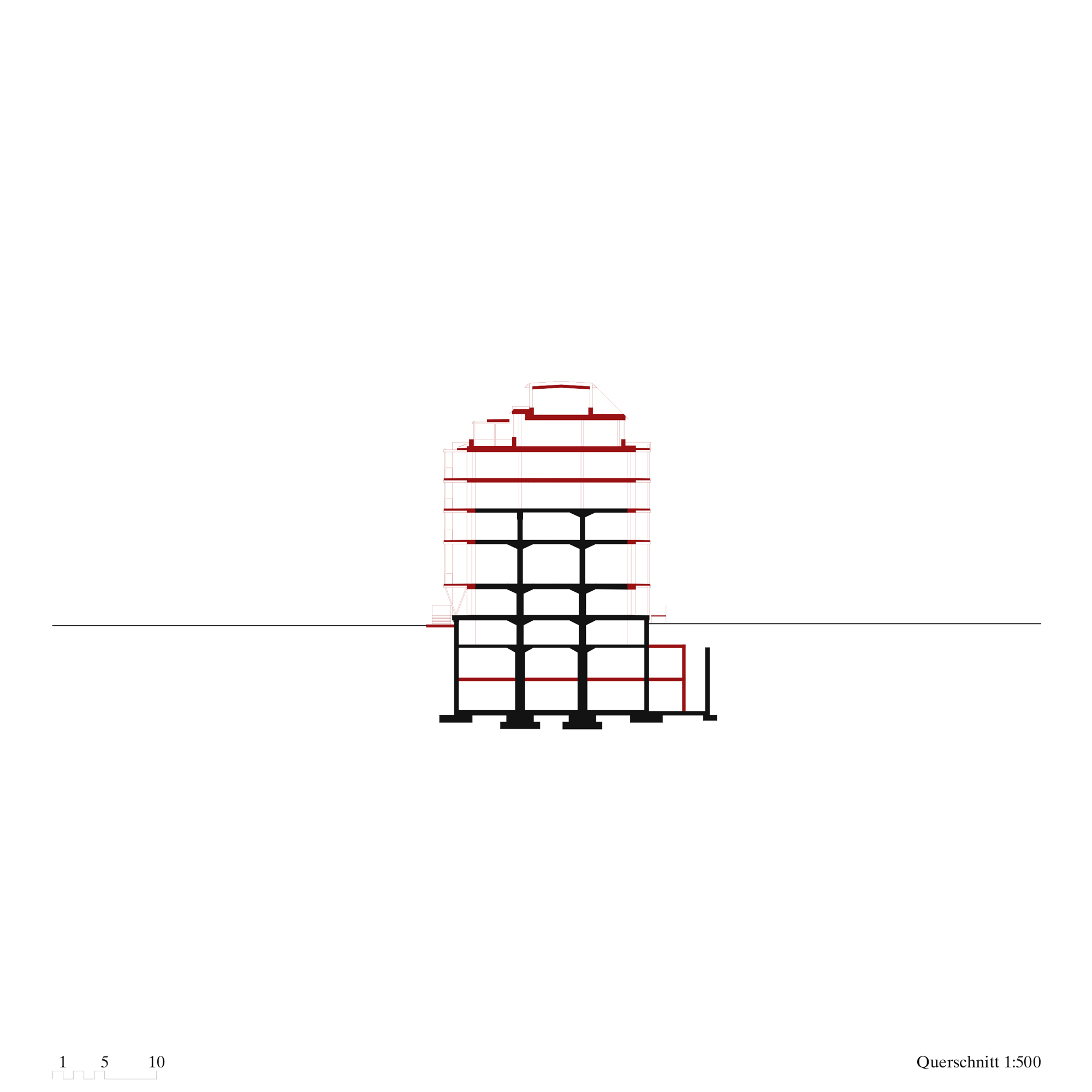
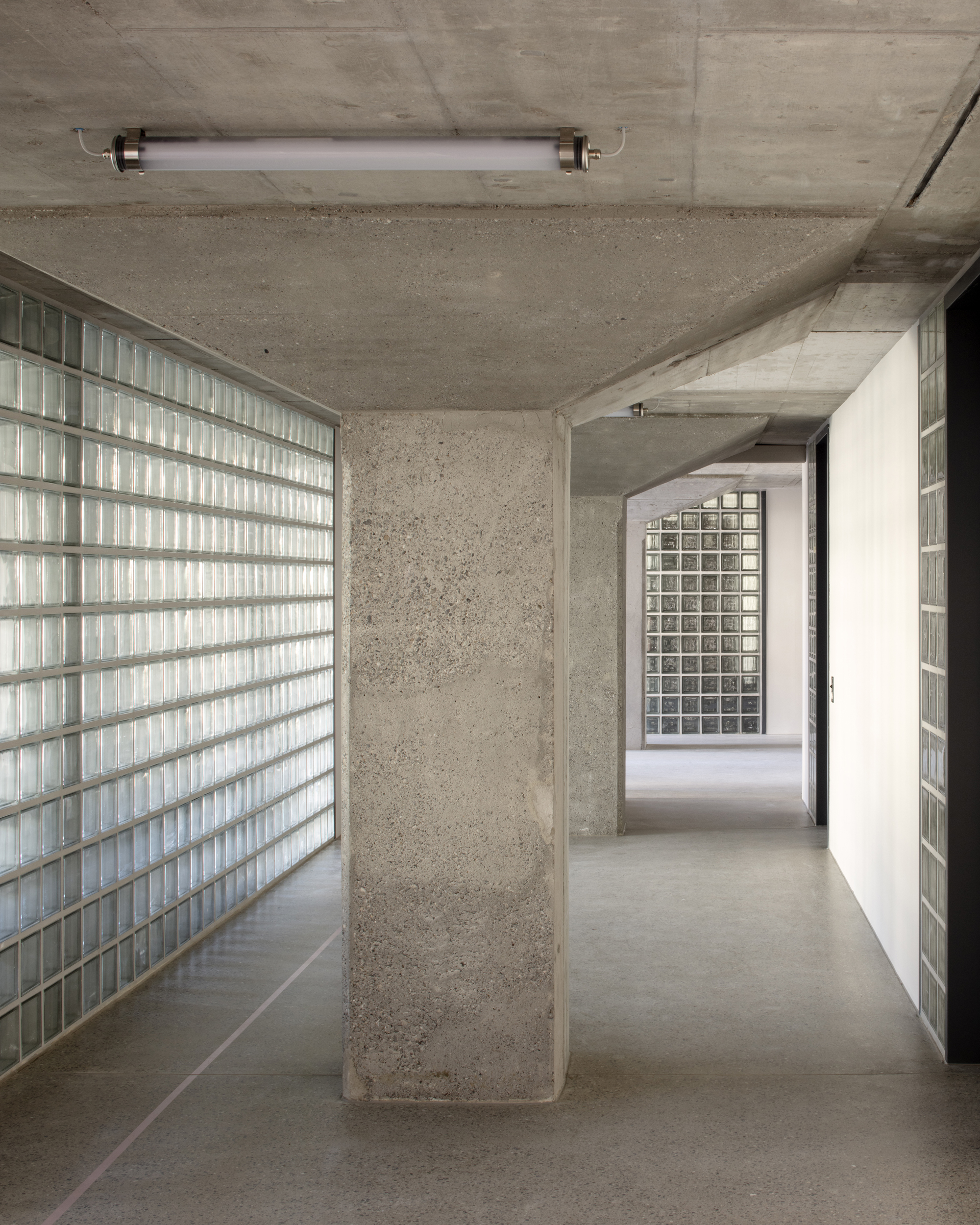

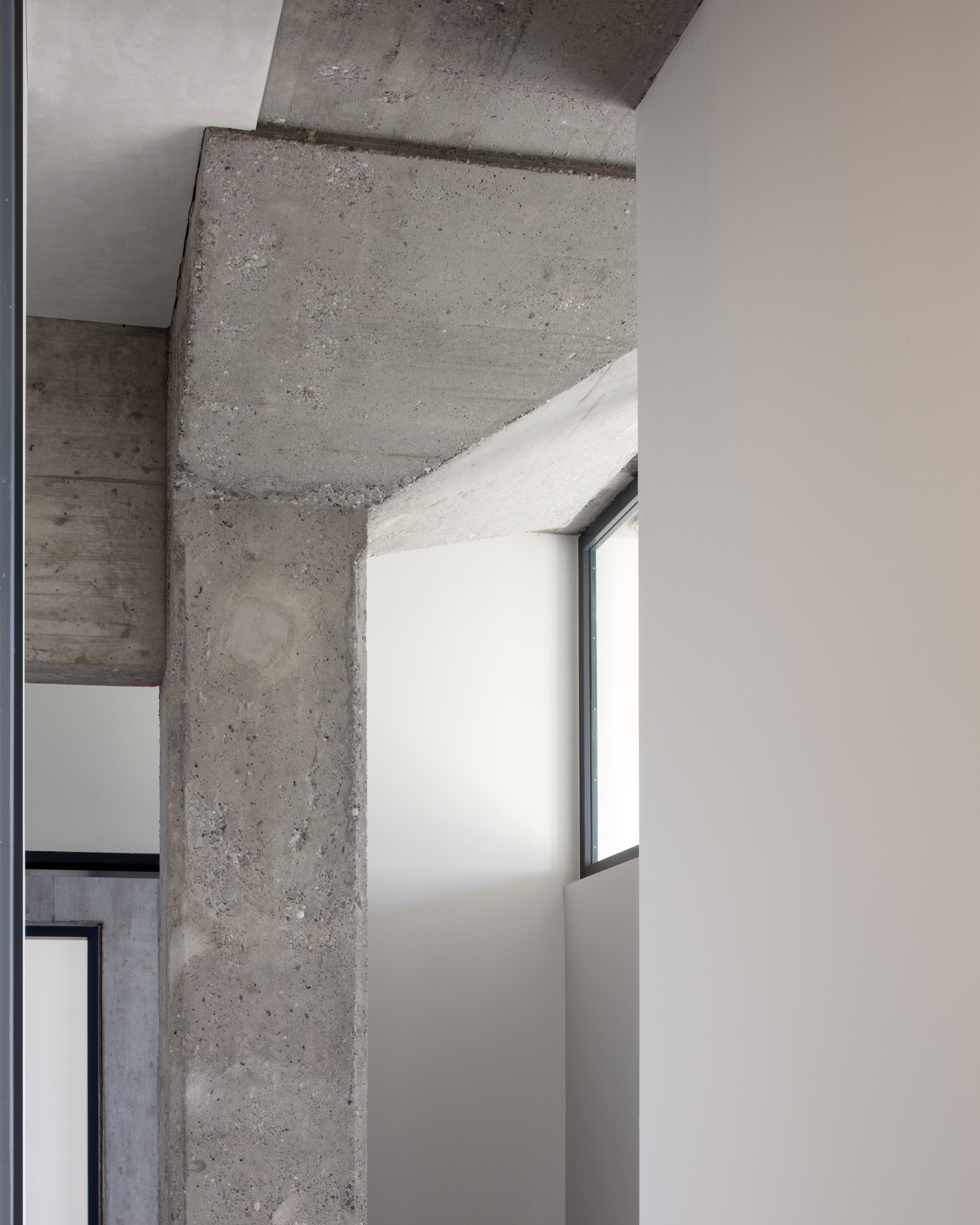
The city in the house
Thus, the columns also form the starting point for the internal organization of the house: the actual urban development is defined by the existing building – but along the ‘rues intérieures’, a city within the house takes shape. This internal system not only provides access to the stairwells, the communal rooms, and the laundry rooms, they also enable a variety of apartment typologies (1.5 to 7.5 room apartments) for all generations and lifestyles. On the mezzanine floor, the domestic sphere links up with the urban one – here the inner street opens into the transverse entrance halls and invites one into the house via stairs and ramps. The commercial spaces and the café are located at ground level at the heads of the building, directly addressing the city. The network of paths finds its end in the community room and the collective roof terrace.

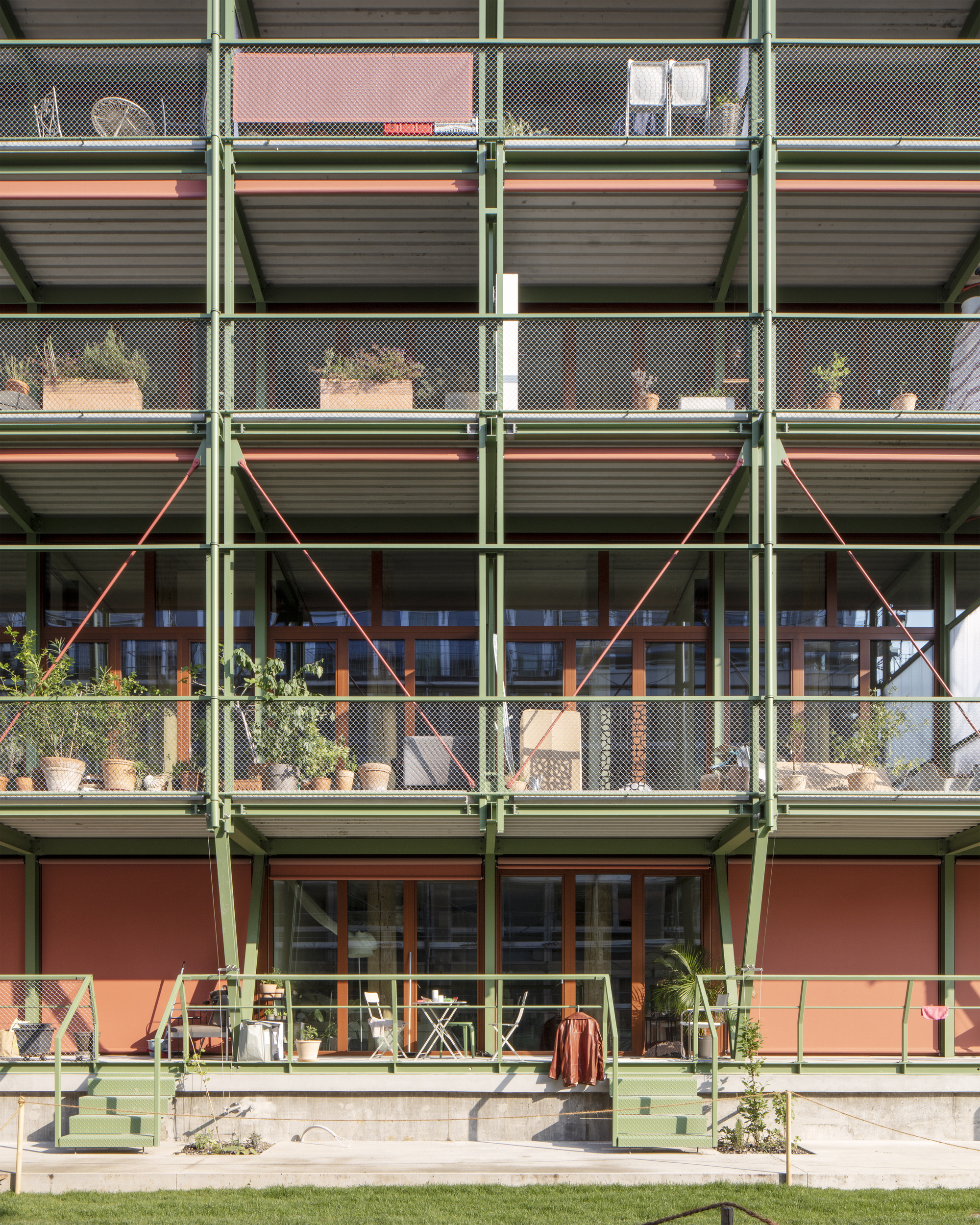
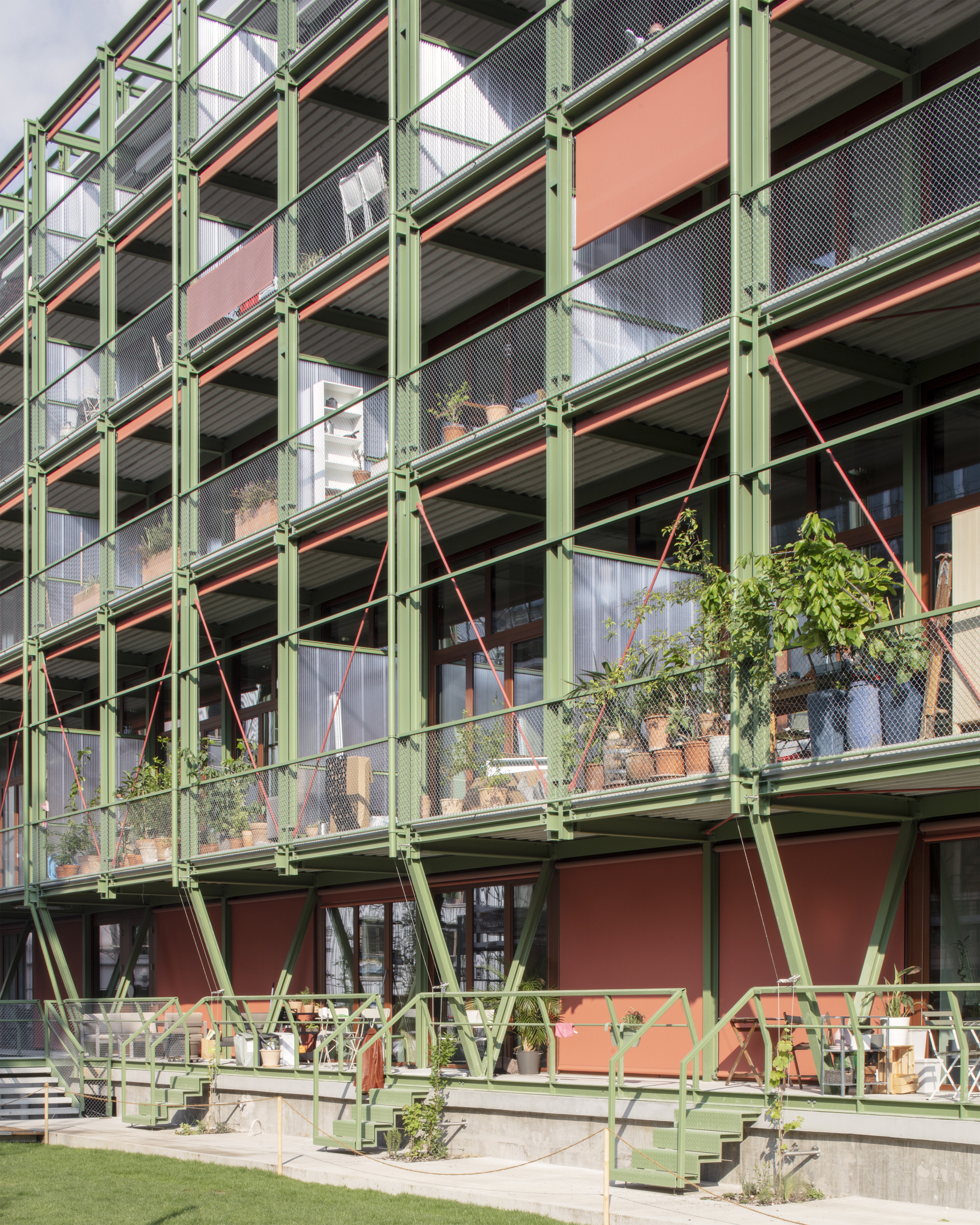
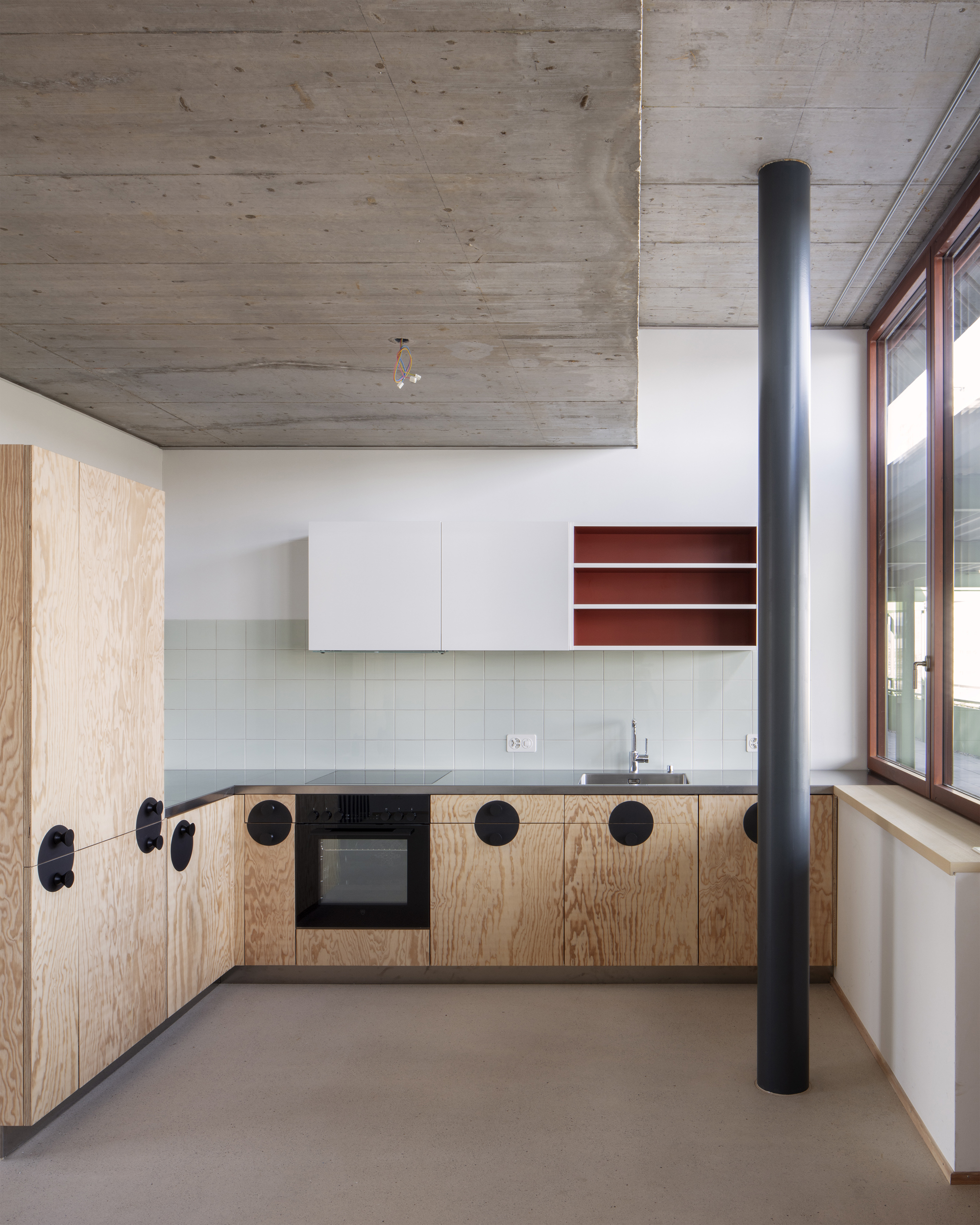
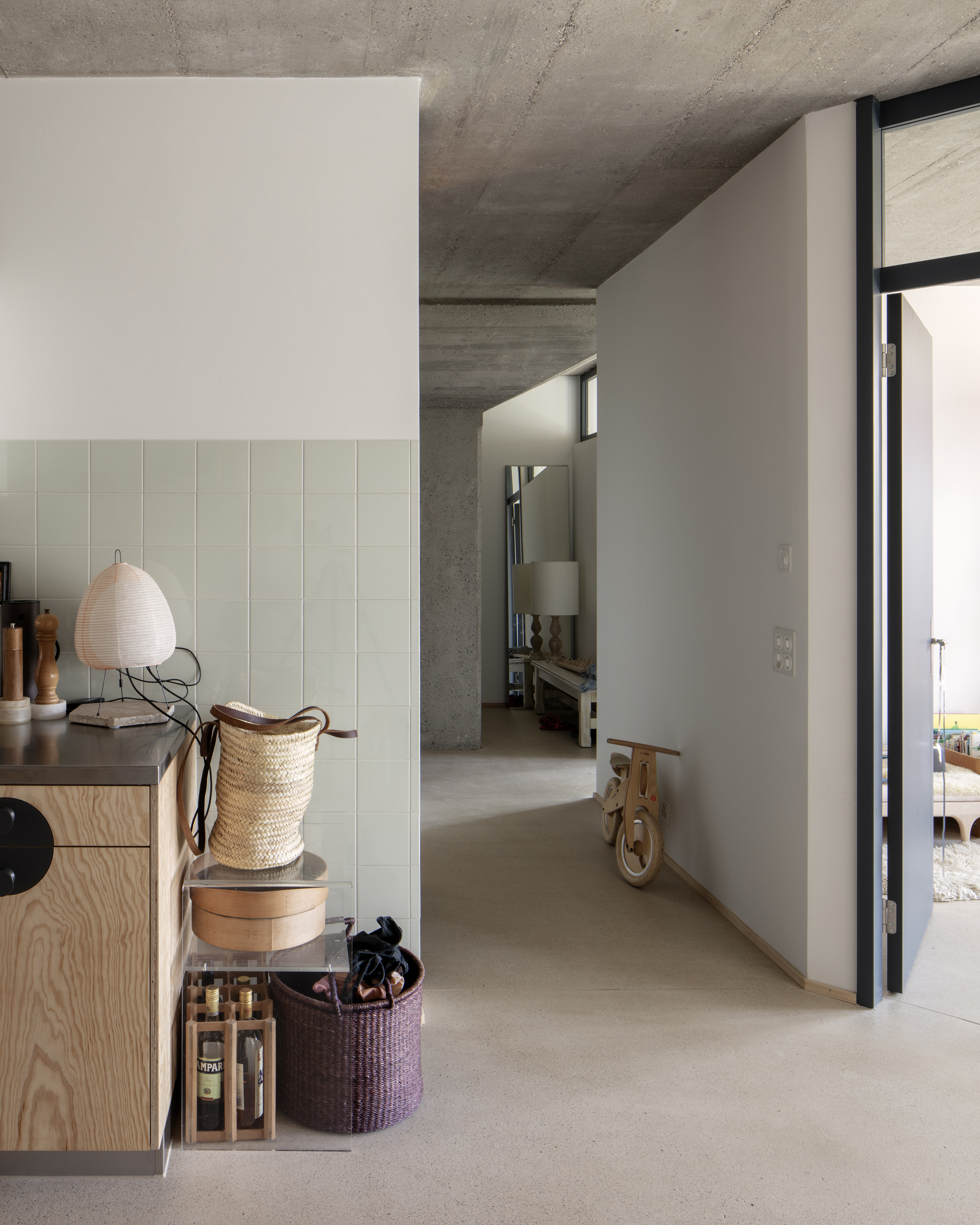
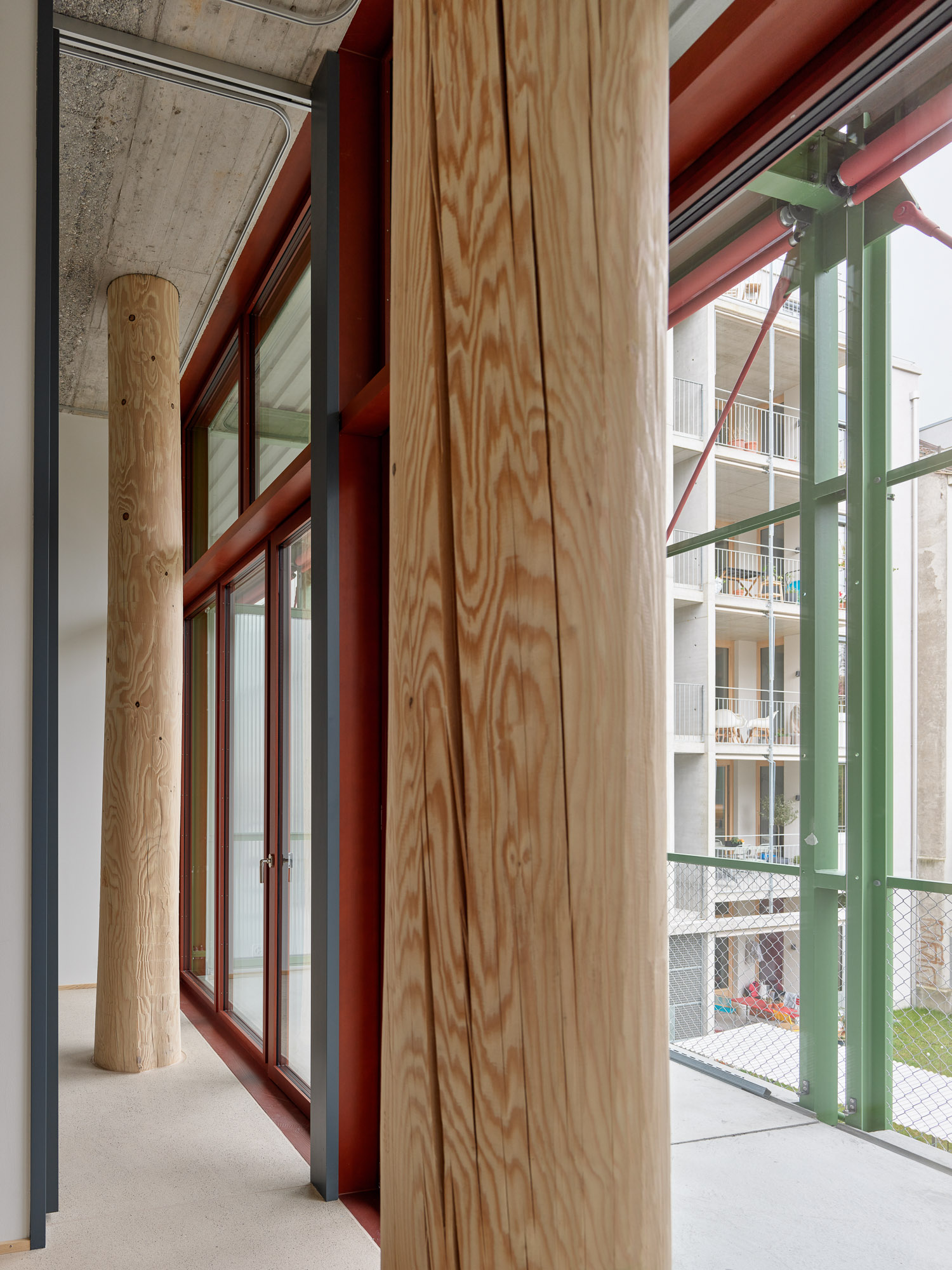
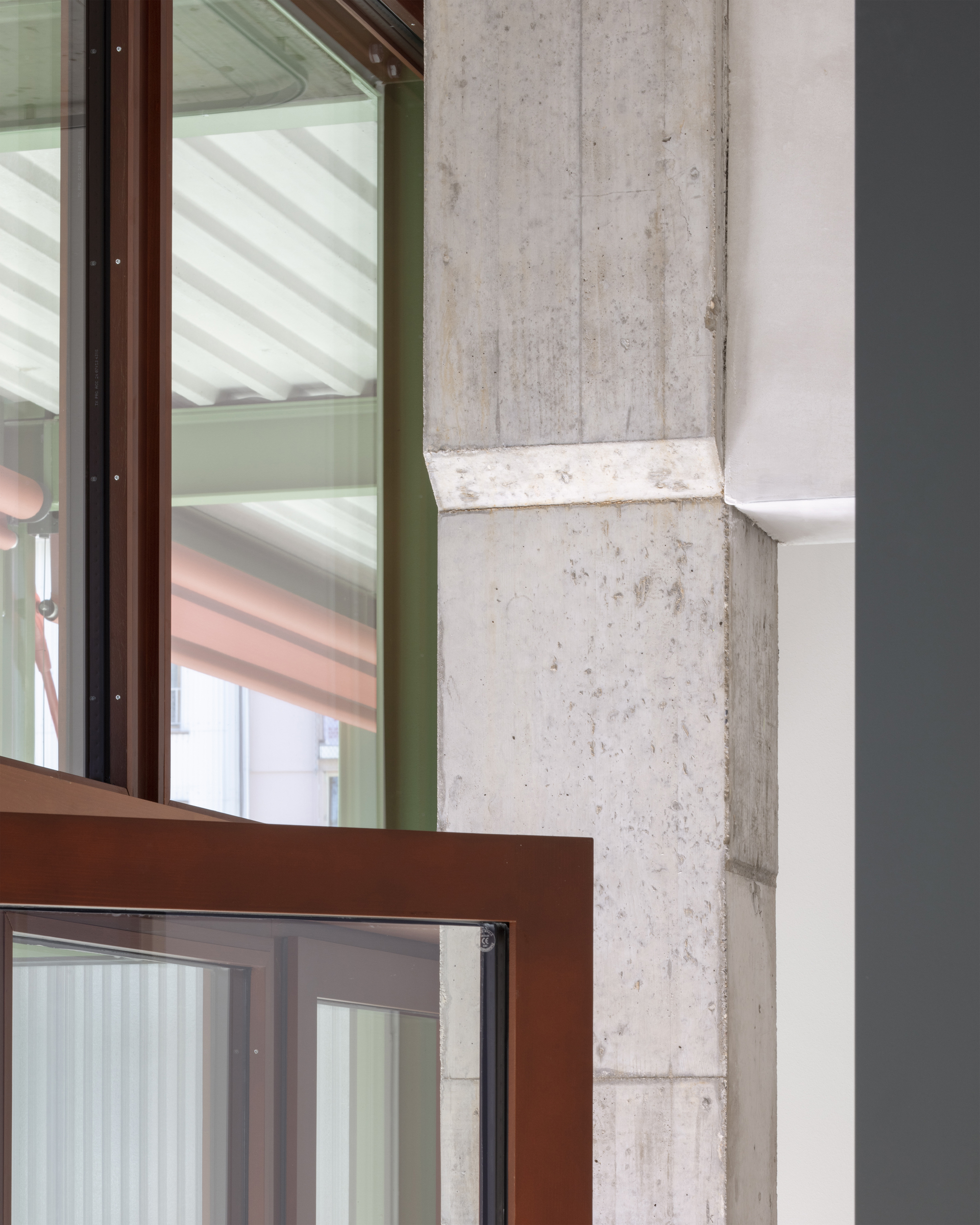
Ecological responsibility
In addition to the design-defining expressiveness of the existing columns, ecological sustainability also motivates the careful treatment of the existing structure. In this case, 42% of the buildings grey energy was saved by continuing to use the old structure. The photovoltaic system and the ground-water heat pump make the building two-thirds self-sufficient in terms of total energy consumption.
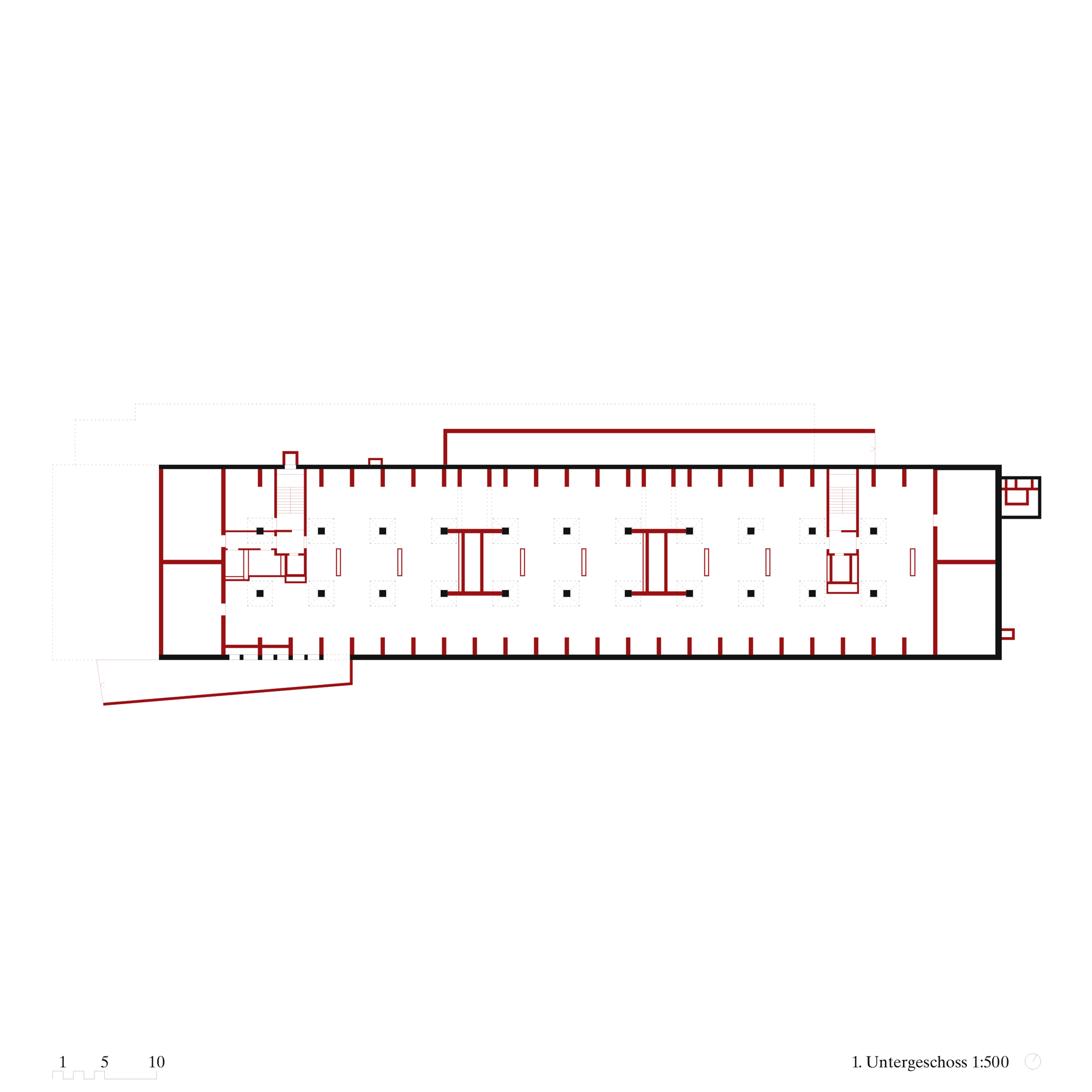
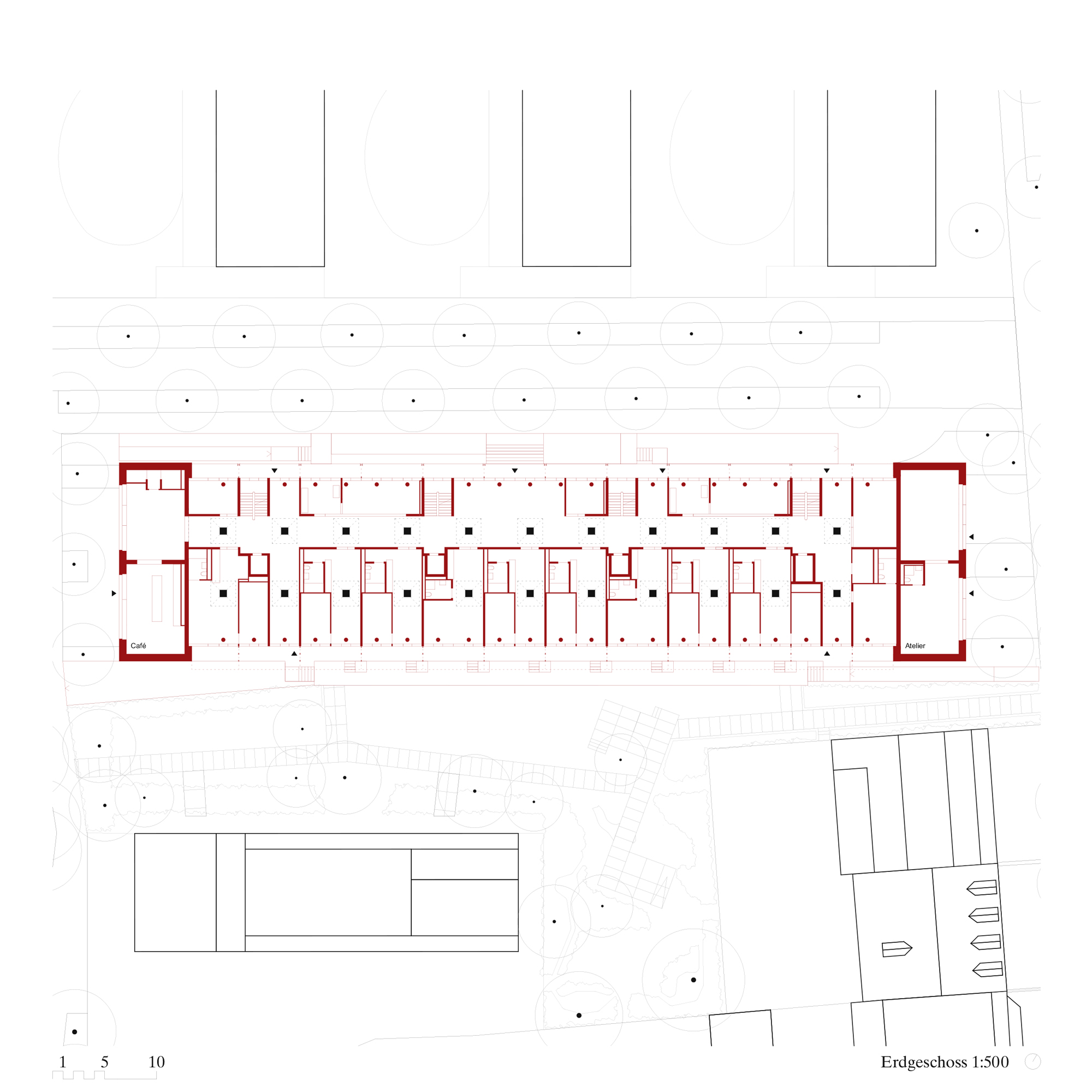
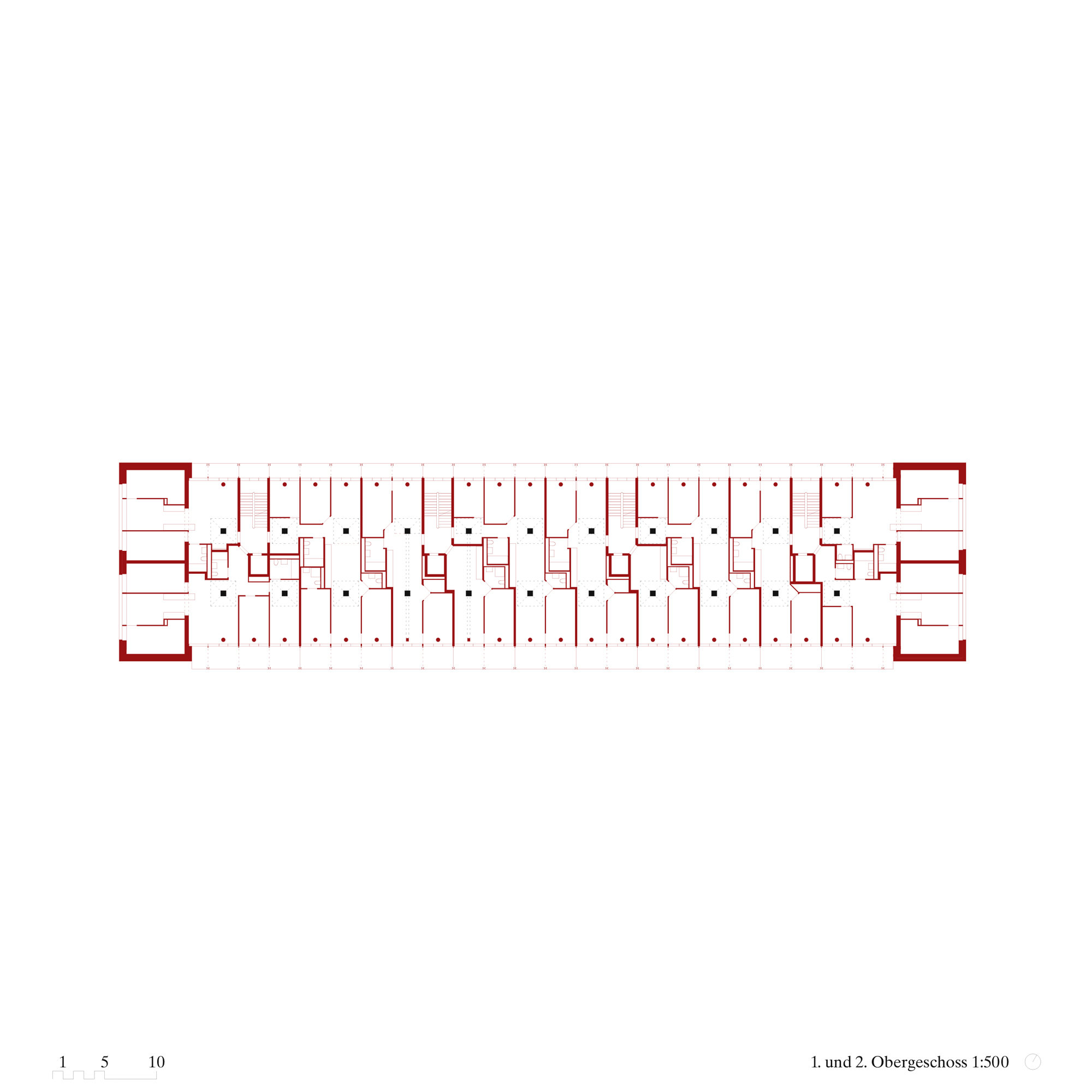
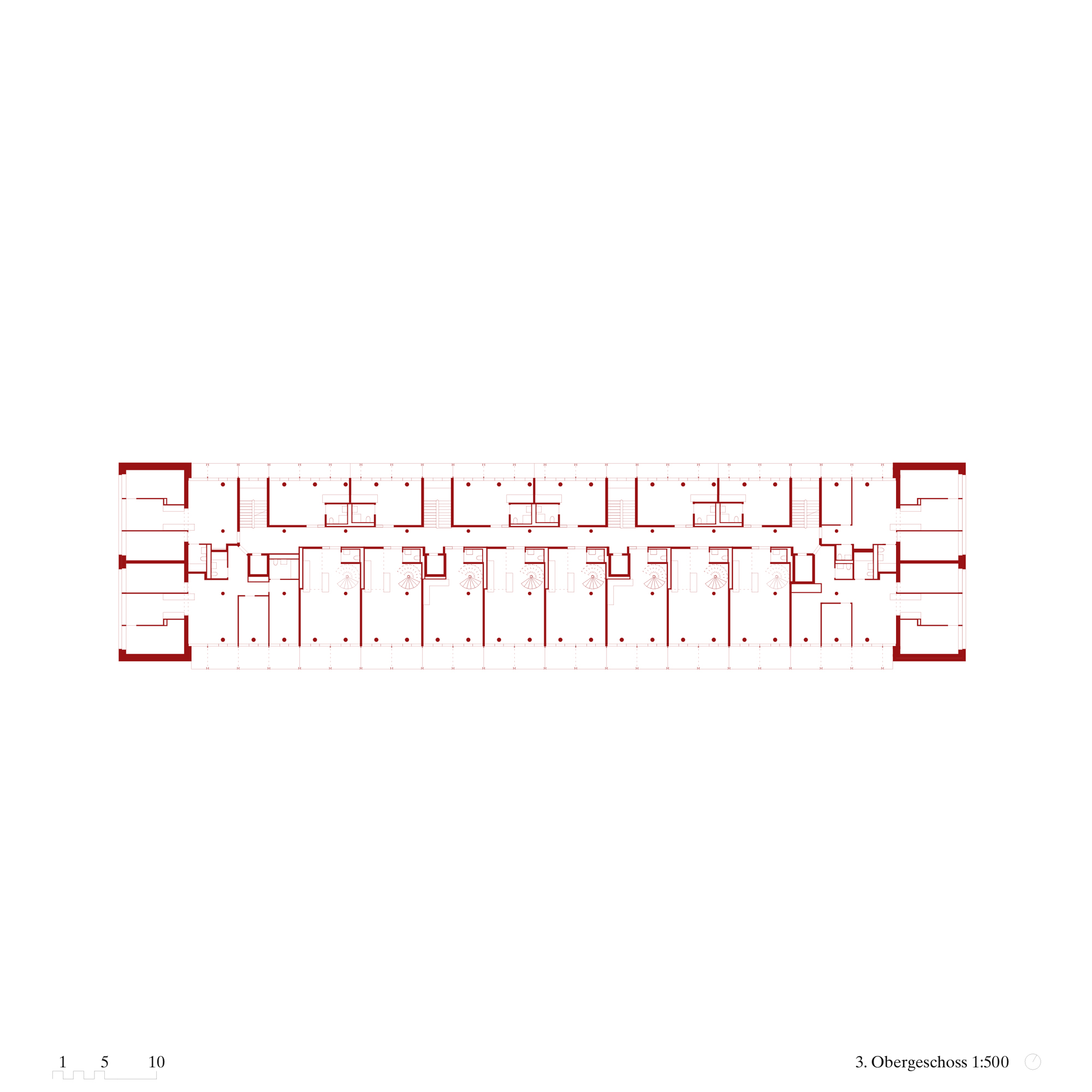
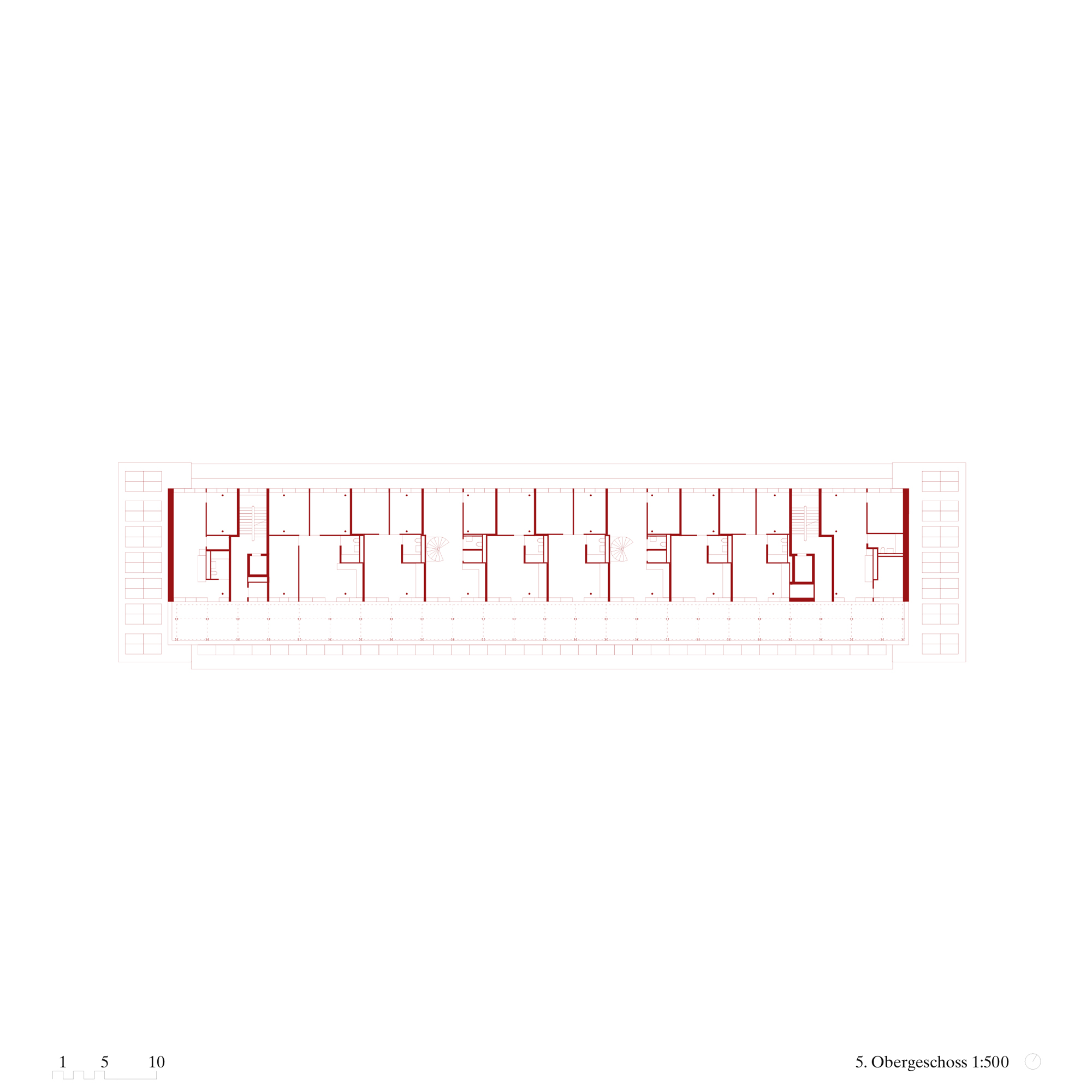
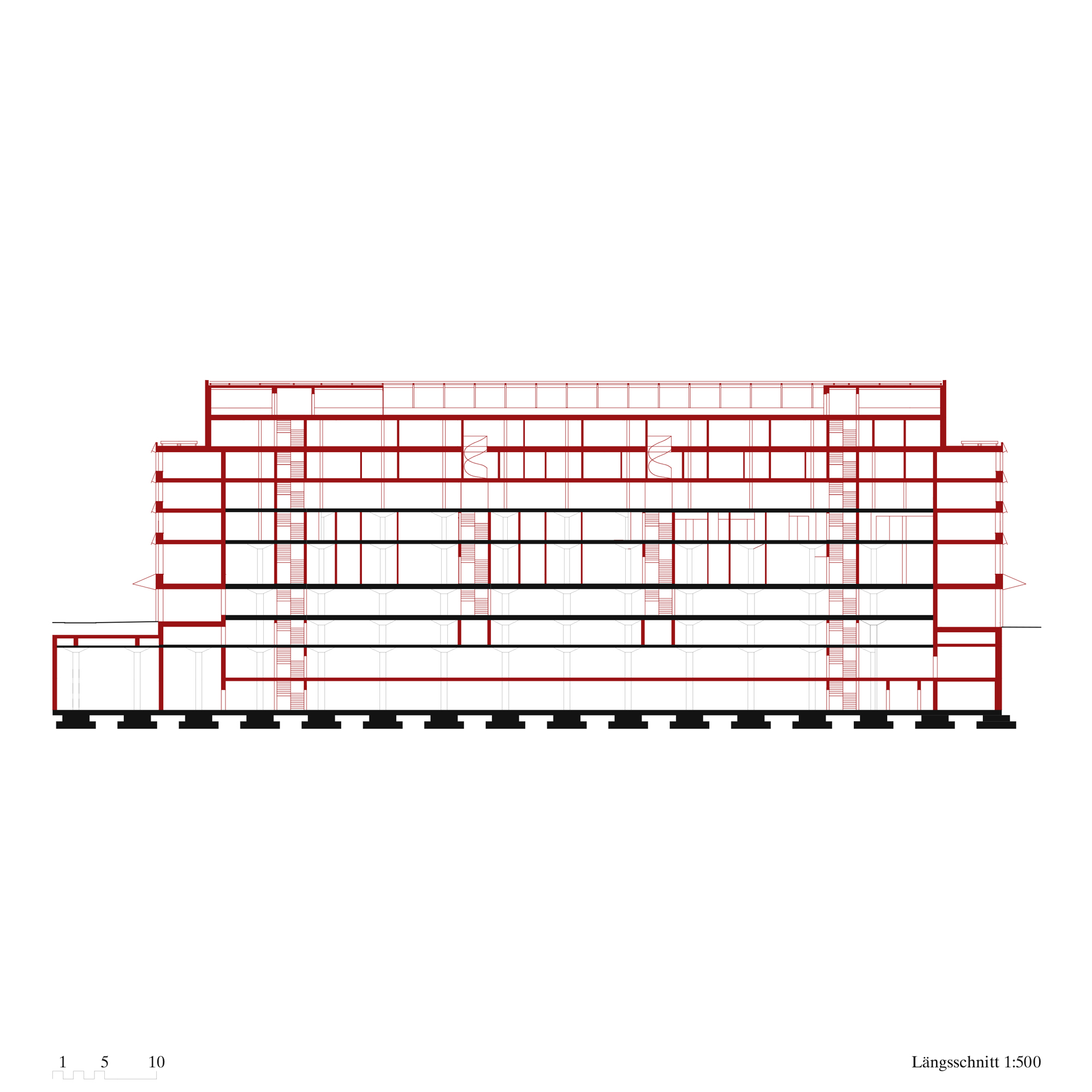
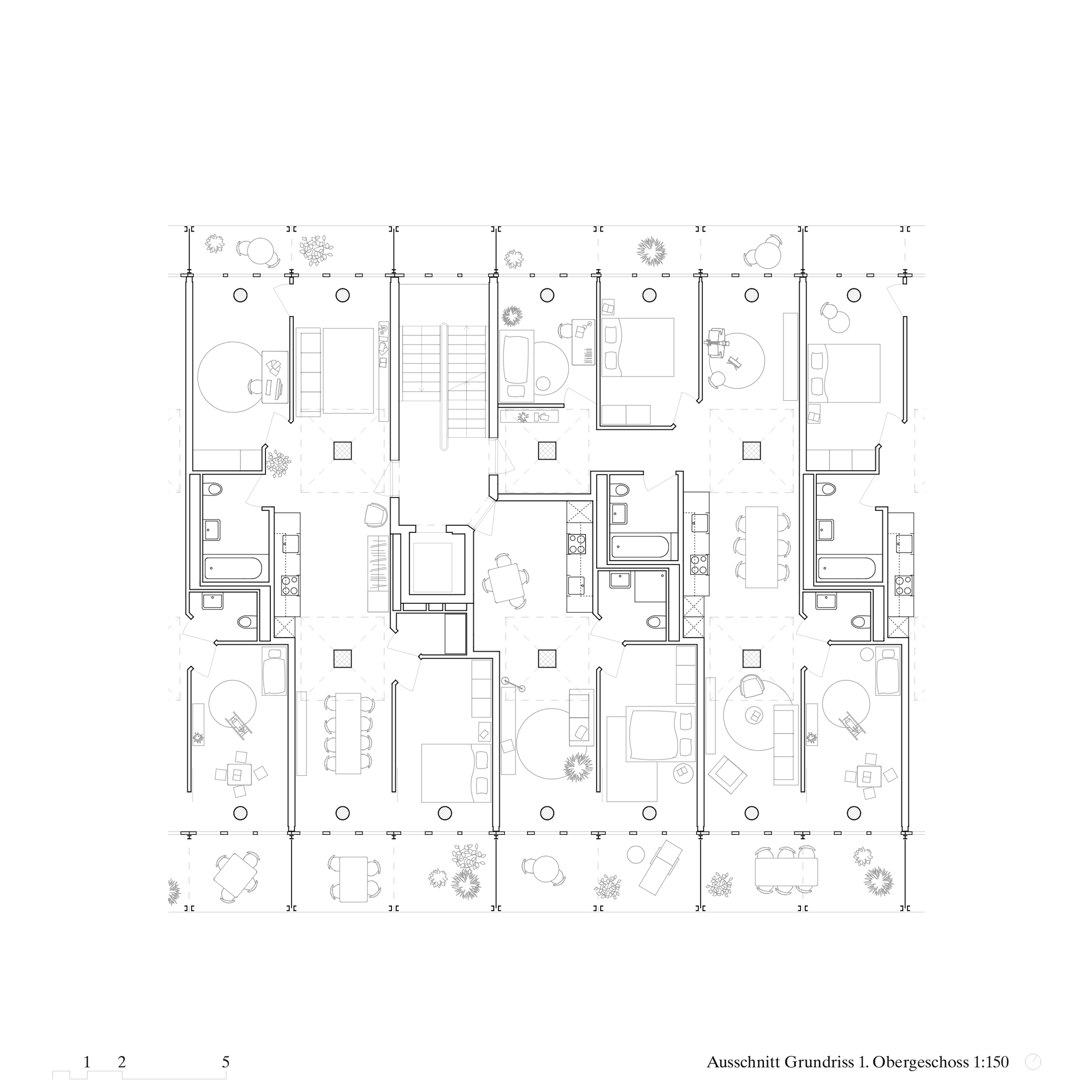
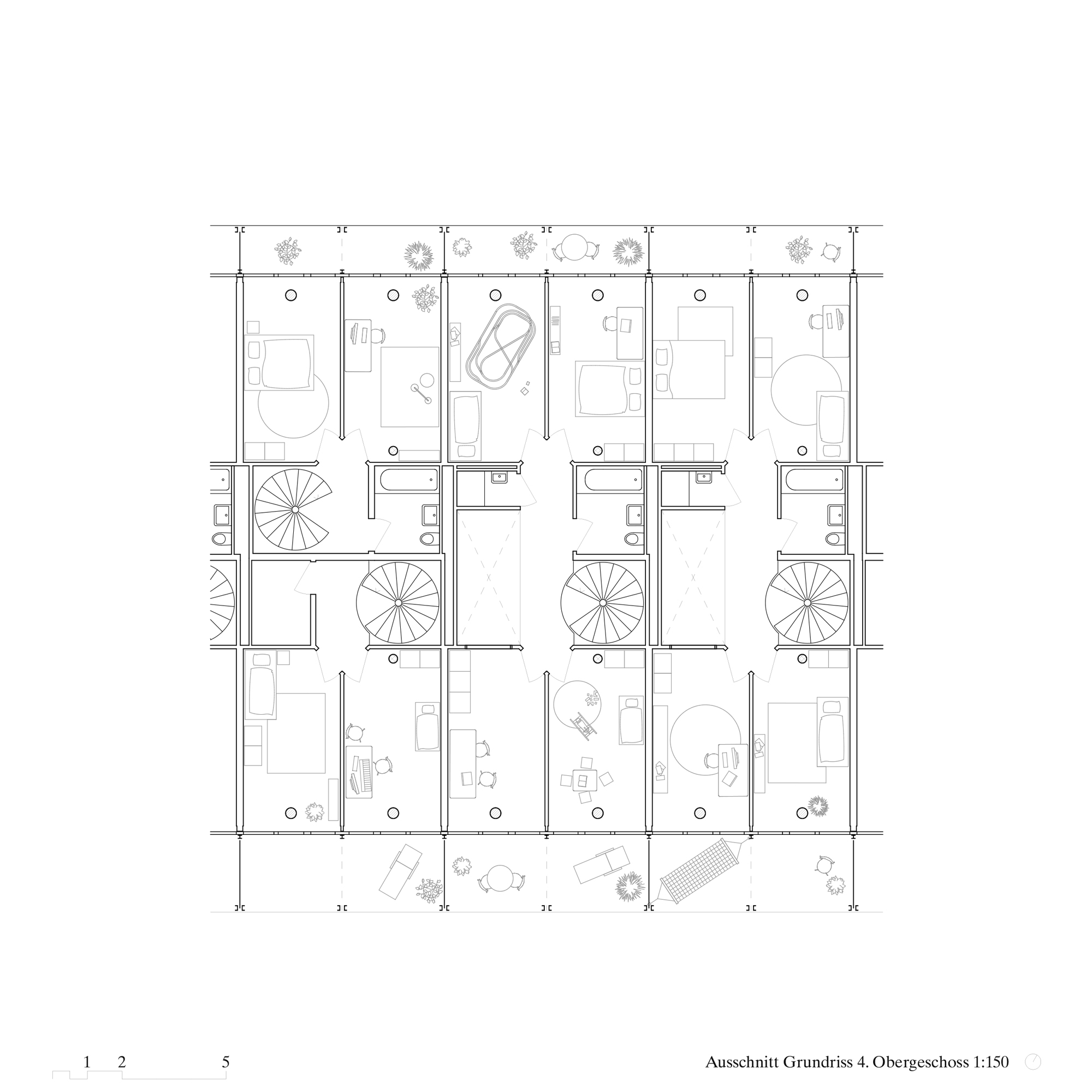

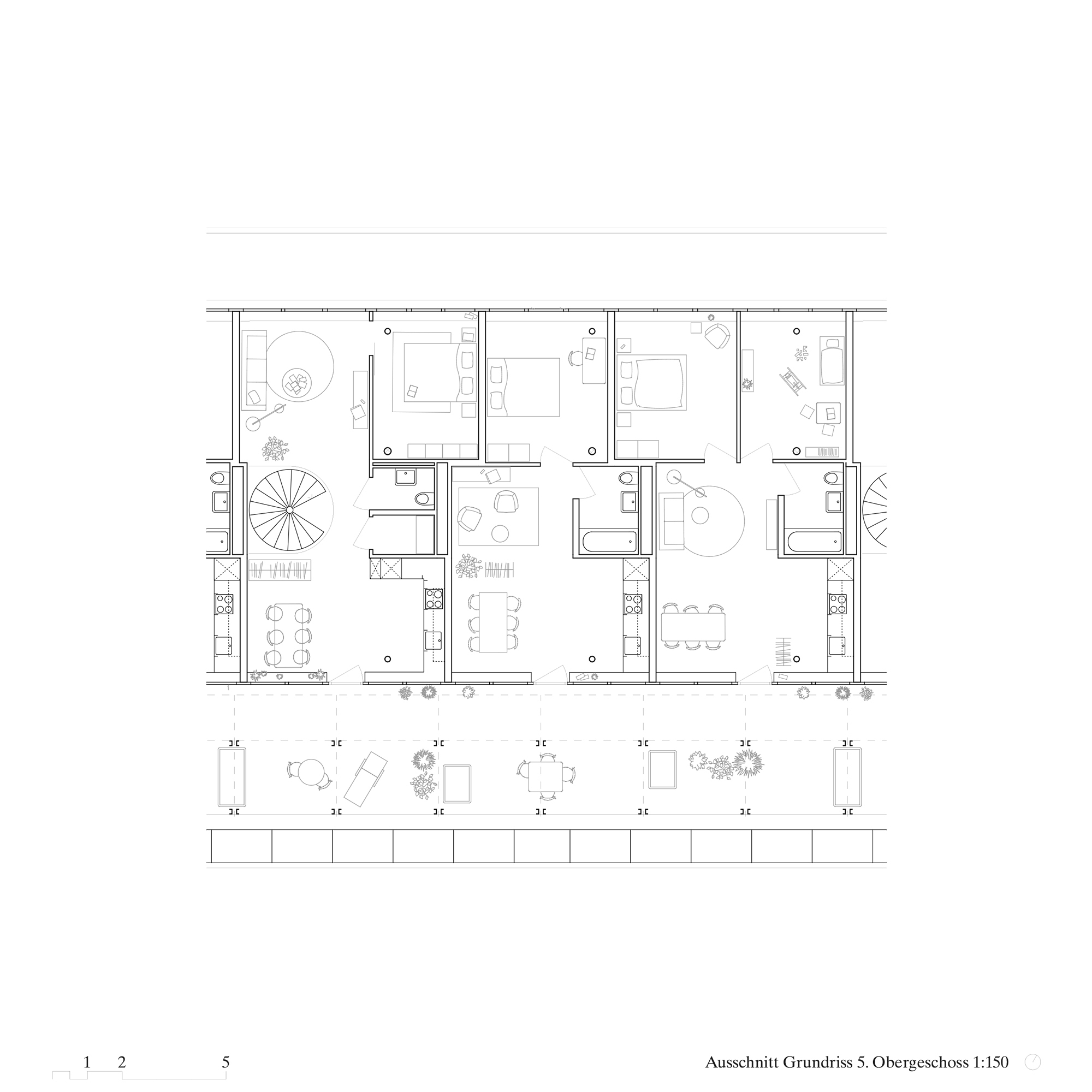
Other projects by Esch Sintzel




